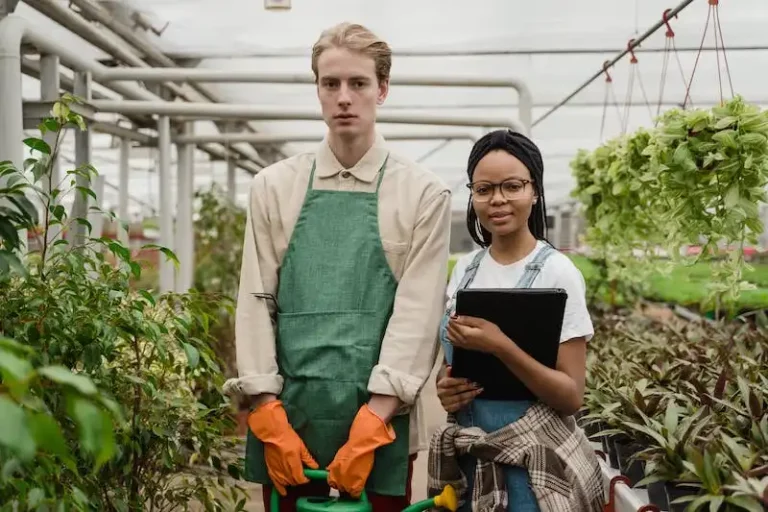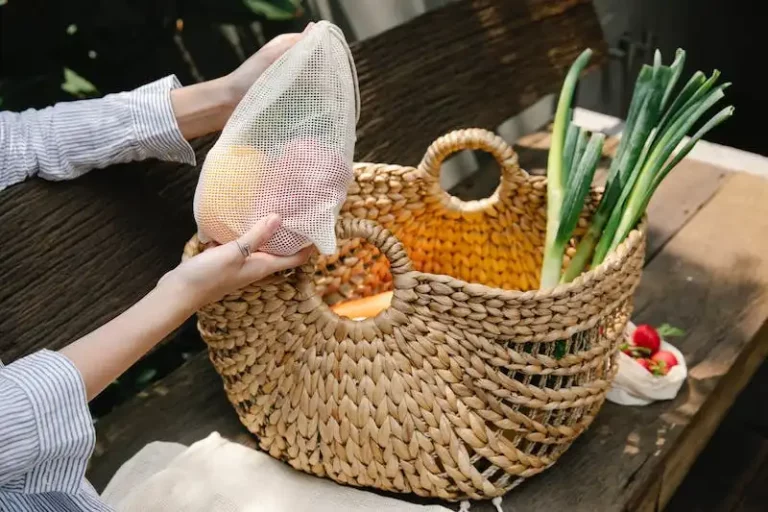Growing artichoke in your garden can be a rewarding experience. Artichokes are tall, thick plants that are likely to catch the attention of anyone passing by. They are also a versatile vegetable, suitable for a variety of dishes and preparations.
When considering to grow artichokes in your garden, it’s important to take into account the weather and temperature in your area. Artichokes thrive in mild climates, where the temperatures don’t drop below 25°F (-4°C) during winter. However, they can still be grown in colder regions by using mulches to protect them from the frost.
In terms of soil, artichokes prefer well-draining soil with plenty of organic matter. They like moisture, but not excessive watering, which can cause rot and other diseases. It’s also important to provide them with enough space, as they can grow up to 4 feet (1.2 meters) tall and 6 feet (1.8 meters) wide.
Artichokes are a member of the thistle family and grow from dormant roots, especially during the summer. They can be started from seeds, but most gardeners prefer to buy young plants from a local nursery. If you decide to start from seeds, it’s best to start them indoors in late winter or early spring, and transplant them outdoors when the weather has warmed up.
Once planted, artichokes require regular watering and adequate fertilization to maintain their vigor. It’s also important to provide them with a suitable companion plant to ward off aphids, which can eat away at the artichoke leaves. French marigolds are a good choice, as they release a scent that repels aphids.
Artichokes are ready to harvest when the flower buds are tight and compact, and the outer leaves are still silvery-green. To preserve their freshness, it’s best to store them in the refrigerator for up to a week. However, if you plan to use them beyond that, it’s recommended to blanch and freeze them. Another option is to can them in vinegar or wine.
Overall, growing artichokes can be a rewarding experience, with the right amount of patience and care. Whether you are a seasoned gardener or just starting out, artichokes are a great addition to any garden. So why not give it a try and enjoy the beauty of their flowers and the delicious taste of this versatile vegetable?
How to Grow Artichokes: A Complete Guide with Photos
Artichokes are a unique and edible addition to any garden. Depending on the variety and the region in which they are grown, artichokes can be a productive and beautiful addition to your garden. In this complete guide, we will provide you with essential information on how to grow and harvest artichokes, accompanied by helpful photos.
Choosing the Right Variety
When selecting artichoke plants for your garden, it is important to consider the climate and the available space. Some varieties of artichokes are more suitable for specific regions, while others can grow in a wide range of climates. Utah Globe and Green Globe are popular choices for colder regions, while Desert Globe and Imperial Star thrive in warmer areas.
Preparing the Soil
Artichokes require well-drained soil with a pH level between 6.5 and 7.5. Before planting, amend the soil with organic matter to improve its texture and fertility. Mixing compost or aged manure will help retain moisture and provide essential nutrients. It is also advisable to ensure that the soil is loose to allow the roots to penetrate easily.
Planting Artichokes
Artichokes can be grown from seed or by transplanting young plants from a nursery. If you choose to start from seed, sow them indoors in pots approximately 8-10 weeks before the last frost date. Transplant them outdoors once the danger of frost has passed. Be sure to space the plants at least 3 feet apart to allow for their large size and promote air circulation.
Caring for Artichoke Plants
Artichoke plants require regular watering. Water deeply, especially during dry spells, to ensure that the roots receive adequate moisture. It is also important to regularly remove weeds and prune any dead or damaged leaves to maintain plant health and prevent the risk of pests. Providing the plants with sunlight for 6-8 hours a day will help them thrive.
Harvesting Artichokes
Artichokes are typically ready to harvest when the flower buds are still closed but have reached a full round size. Use a sharp knife to cut the artichokes just above the base of the stem. It is best to harvest them in the morning when the heads are still tightly closed, as they tend to open up as the day progresses. Harvesting artichokes promotes the growth of new buds, so the more you harvest, the more you’ll produce throughout the growing season.
The Benefits of Growing Artichokes
Aside from their delicious taste, artichokes offer numerous health benefits. They are low in calories, high in fiber, and rich in vitamins and minerals such as folate. Artichokes also contain antioxidants that help protect against certain diseases. Growing your own artichokes allows you to enjoy freshly harvested produce, free from pesticides and other harmful chemicals.
So, why not give artichokes a try in your own garden? With the right care and attention, you can enjoy the beauty of the plant, the productivity of abundant artichokes, and the satisfaction of growing your own delicious and nutritious food.
What is an artichoke
An artichoke is a unique and delicious vegetable that has been cultivated for many years. It belongs to the thistle family and is native to the Mediterranean region. The artichoke plant produces large flower buds, which are harvested and cooked as a tasty and nutritious food. Artichokes are known for their silvery-green leaves and thick, meaty hearts.
Artichokes require a cool climate with mild winters and warm summers to grow well. They are typically grown as perennials, meaning they can live for several years. The plants can reach over 4 feet in height and require a lot of space to grow properly. They can be grown from seeds or propagated by dividing existing plants.
Artichokes are not difficult to grow, but they do have specific soil and fertilization requirements. They prefer well-drained, loamy soils that have been amended with organic matter. They also require regular fertilization to promote healthy growth. In addition, artichokes need a good amount of sunlight to thrive, so it is important to plant them in a sunny spot in your garden.
One of the unique characteristics of artichokes is their ability to overwinter in many regions. If you live in a colder climate, you can cover the plants with plastic or other protective covers to preserve them during the winter months. Artichokes can also be harvested and stored in a cool place for a short period of time.
Harvesting artichokes is a bit of an art form in itself. The flower buds are ready to harvest once they reach their prime size and shape. To harvest, simply cut the bud from the plant, leaving a few inches of stem attached. Be sure to wear gloves when handling artichokes, as the spiky leaves can be quite sharp.
Once you have harvested your artichokes, there are many delicious ways to prepare them. They can be steamed, boiled, grilled, or even stuffed. Artichoke hearts can be used in a variety of recipes, from salads to main dishes. They have a unique flavor that is both earthy and tangy, and they pair well with lemon and other citrus flavors.
Artichokes are not without their problems. They can be susceptible to aphids, which are small insects that feed on the leaves and stems of the plants. Aphids can be controlled with insecticidal soap or by attracting natural predators, such as ladybugs, to your garden.
In conclusion, artichokes are a delicious and nutritious vegetable that can be grown in your own garden. They require specific growing conditions, such as cool weather and well-drained soils, but with the right care and attention, you can enjoy a bountiful harvest of artichokes for many years to come.
Source: https://www.almanac.com/plant/artichokes
Artichoke Varieties
When it comes to growing artichokes in your garden, there are several different varieties to choose from. Each variety has its own unique characteristics and requirements, so it’s important to select the right one for your specific growing conditions. Here are some popular artichoke varieties to consider:
Globe Artichoke (Cynara cardunculus)
Globe artichoke is the most common variety of artichoke grown for culinary purposes. These large plants are known for their round, tightly packed heads and thick, edible leaves. Globe artichokes thrive in cool, sunny climates with rich, well-drained soil. They require regular watering and frequent fertilization to produce healthy, abundant flowers.
Violetto Artichoke
Violetto artichokes are a smaller variety of artichoke that produce deep purple flower heads. These artichokes are often sold before they fully mature, as their smaller size makes them more tender and easier to prepare. Violetto artichokes are a favorite among home gardeners because they can be grown in containers and require less space than other varieties.
Green Globe Artichoke
Green globe artichokes are a popular variety for both home gardeners and commercial growers. They have large, tender hearts and are known for their milder, less bitter flavor. Green globe artichokes are perennial plants that can re-grow each year if they are properly cared for. They prefer a sunny location with well-drained soil and require regular fertilization to maintain optimal growth.
Imperial Star Artichoke
The imperial star artichoke is an annual variety that is grown from seedlings. It matures quickly, usually within a couple of months, making it a good choice for gardeners in colder climates with shorter growing seasons. Imperial star artichokes are resistant to frost and can tolerate a wide range of soil conditions. They produce medium-sized, tender artichokes with a slightly nutty flavor.
Frost Kissed Artichoke
Frost kissed artichokes are a unique variety that produce artichokes with a slightly sweeter taste. The heads of these artichokes are exposed to frost, which helps to break down the natural sugars in the leaves and produce a more flavorful heart. Frost kissed artichokes are typically grown in colder climates where frost is a common occurrence.
These are just a few of the many artichoke varieties available for home gardeners. Each variety has its own specific benefits and requirements, so be sure to do your research and select the right variety for your garden. Whether you choose to grow globe artichokes, violetto artichokes, green globe artichokes, imperial star artichokes, or frost kissed artichokes, you’re sure to enjoy the delicious and nutritious benefits that artichokes provide.
Are artichokes annuals or perennials?
Artichokes are perennial plants, meaning they can live for multiple years if given the proper care. They have bright, silvery-green leaves and produce large edible flower heads.
When considering whether to grow artichokes, it’s important to know that they are not suitable for all climates. Artichokes prefer a cool coastal climate but can also be grown in warmer areas. If you live in a warmer region, you should consider providing some shade or planting them next to a stream or in a low-lying area to help keep them cool.
Artichokes can be grown from seeds or propagated through division. If you choose to sow seeds, it’s recommended to soak them in water overnight before planting. Alternatively, you can start with established plants obtained from a nursery.
In warmer regions, artichokes can be grown as annuals, meaning they are planted and harvested in the same year. In cooler areas, they will require over-wintering to survive the cold temperatures.
To over-winter artichokes, cut the stems to about 6 to 8 inches above the ground in late fall or early winter. Cover the plant with a layer of straw or compost, and use plastic or a secondary covering to protect it from frost. In the spring, remove the covering and the artichoke will eventually regrow.
It’s worth noting that artichokes are heavy feeders and require fertile, well-draining soils. Adding organic matter, such as compost or well-rotted manure, to the soil before planting will help provide the nutrients they need. Additionally, artichokes will benefit from a balanced fertilizer application throughout the growing season.
Artichokes usually take about 2 years to start producing edible flower heads. The second year of growth is when the plants are most productive, and they can continue producing for at least 4 to 5 years. However, the productivity may decline over time, depending on the growing conditions.
Another method of propagating artichokes is to divide the plant. This should be done in late winter or early spring before new growth starts. Use a sharp knife to divide the plant into smaller sections, making sure each division has a good root system. Replant the divisions immediately, giving them enough space to grow.
Artichokes can be susceptible to aphids, so it’s important to regularly inspect the plants for any signs of aphid infestations. Insecticidal soap or a strong stream of water can be used to control them if needed.
In summary, artichokes are perennial plants that can be grown in a variety of climates. They require proper care, well-draining soils, and may need protection in colder regions. With the right conditions, they can provide not only a beautiful addition to your garden but also a delicious appetizer for your table.



